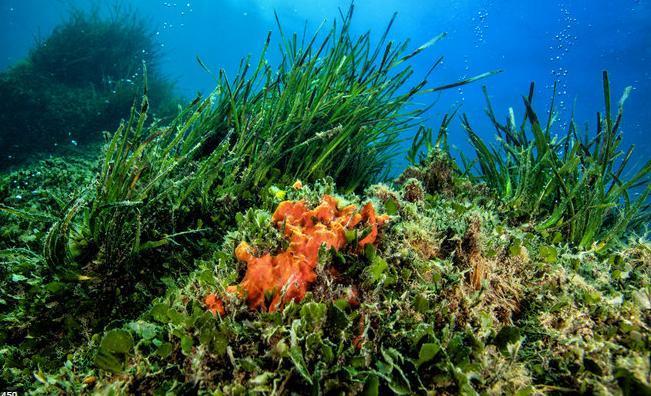Proposals under this topic will address the degradation of coastal and marine habitats, including degraded seabed habitats and will develop and demonstrate protection and restoration solutions to upgrade and enhance the EU's blue natural capital.
Innovation actions have to show the potential to be up-scaled and reproduced at European level and beyond.
Proposals are expected to duly address the connection between marine ecosystems, including seabed habitats, and their biodiversity. Nevertheless, in exceptional cases, proposals may address either specific vulnerable species or habitats that are under strong pressures or that have the most potential to capture and store carbon. Proposals should be site-specific and the scale and range of the sites for demonstration activities has to be ecologically relevant and impactful and show a significant replication potential.
When identifying and restoring degraded areas, particular attention needs to be paid to ensuring that ecosystem services these areas can provide, are resilient to climate change.
The proposals should also address the creation and long term maintenance of adequate conditions for habitats and/or for the movement of species and more generally, for increasing nature’s capacity to adapt to climate change.
The proposed innovation actions for the Blue Parks will seek the most effective and efficient protection and restoration measures, tailored to the specific biogeographical area or marine region. Activities leading to the creation of protected areas should concentrate on areas of high biodiversity value or potential[1] and be consistent with the EU Guidance to Members States on the designation of additional protected or strictly protected areas[2].
Proposals must cover a wide range of ecosystem functions and services using a coherent and systemic approach and avoid the risk of trade-offs of focusing on one or very few ecosystem services at the expense of others. In this respect, seabed protection and restoration should be integrated, including preservation of seabed carbon sequestration capacity.
The involvement of national and local authorities and coastal communities will be required in order to ensure that the solutions designed are best suited, co-created and with the necessary ownership for their successful implementation. Citizen engagement is a pillar concept for the Mission and a key element in relation to conservation and restoration actions. Activities should, therefore, use innovative co-creation management practices and awareness-raising actions to promote a proactive involvement of local communities including land and sea use planners, Marine Protected Area managers, and other stakeholders, in order to allowing for co-creation of solutions. Awareness raising actions to inspire and generate co-ownership for protection of local habitat and biodiversity should be included as well as partnerships and coalitions with existing initiatives. Proposals could include blue reforestation activities with suitable aquatic plants in degraded habitats. Citizen engagement related activities should also be gender-responsive and socially inclusive.
Proposals are expected to contribute to the implementation of the existing legislation, notably in relation to Marine Protected Areas, identifying limiting factors and gaps as well as recommendations addressing environmental or anthropogenic pressures.
Proposals should build links with the Mission implementation monitoring system that will be part of the Mission Implementation Support Platform and with the Blue Parks technical support platform for reporting, monitoring and coordination of all relevant implementation activities. In this regard, projects should cooperate closely with projects funded under Mission Ocean topic HORIZON-MISS-2021-OCEAN-02-01: European Blue Parks.
Proposals will build upon existing knowledge systems and upon the Mission Digital and Water Knowledge system for access to data, monitoring and forecasts and knowledge dissemination. . The proposals should also build on research and innovation developed in the frame of related projects in the current and previous EU framework programmes, such as but not limited to Horizon 2020, LIFE, EMFF/EMFAF and national and regional programmes as well as the activities of the Sustainable Blue Economy Partnership and the Biodiversa+ Partnership.
Projects funded under this topic would benefit from cooperation, networking and exchanges of information with the projects funded under other Cluster 6 topics: HORIZON-CL6-2021-BIODIV-01-12 (Improved science based maritime spatial planning and identification of marine protected areas), HORIZON-CL6-2021-BIODIV-01-10 (Demonstration of measures and management for coastal and marine ecosystems restoration and resilience in simplified socio-ecological systems); HORIZON-CL6-2021-BIODIV-01-03 (Understanding and valuing coastal and marine biodiversity and ecosystems services); HORIZON-CL6-2021-BIODIV-01-04 (Assess and predict integrated impacts of cumulative direct and indirect stressors on coastal and marine biodiversity, ecosystems and their services); HORIZON-CL6-2022-CLIMATE-01-02: Understanding the oceanic carbon cycle as well as with activities supported under the H2020 Green Deal call, notably LC-GD-7-1- 2020 Restoring biodiversity and ecosystem services.
In support of the implementation of the European Green Deal and the Biodiversity Strategy, project results are expected to contribute to all of the following expected outcomes:
- Protected, restored and sustainably used and managed marine biodiversity, blue natural capital, marine and coastal ecosystems;
- Reinforced ecosystem services from restored and protected marine areas;
- Seabed protection and restoration solutions, including to preserve seabed carbon sequestration capacity;
- Socio-economic transition processes through innovative solutions for ecosystem-based management of marine protected areas;
- Enhanced resilience of coastal and marine ecosystems;
- A blueprint for the extension of marine protected areas and/or for the shift of their status from “protected” to “strictly protected”;
- A blue print for the identification of ecological corridors as part of a blue Trans-European Nature Network, and a strategy to build such a network;
- Contribution to the Mission’s Digital Ocean and Water Knowledge system through marine observations and open data and knowledge sharing ;
- Reinforced EU leadership in international efforts to combat biodiversity loss, in line with the EU key priorities and international commitments, including through the protection, conservation, restoration and sustainable use of marine ecosystems and biodiversity.
Link with CMA Goals
Goal I: Healthy marine and coastal ecosystems / Priority 1: Ensure the protection and sustainability of the marine ecosystem

